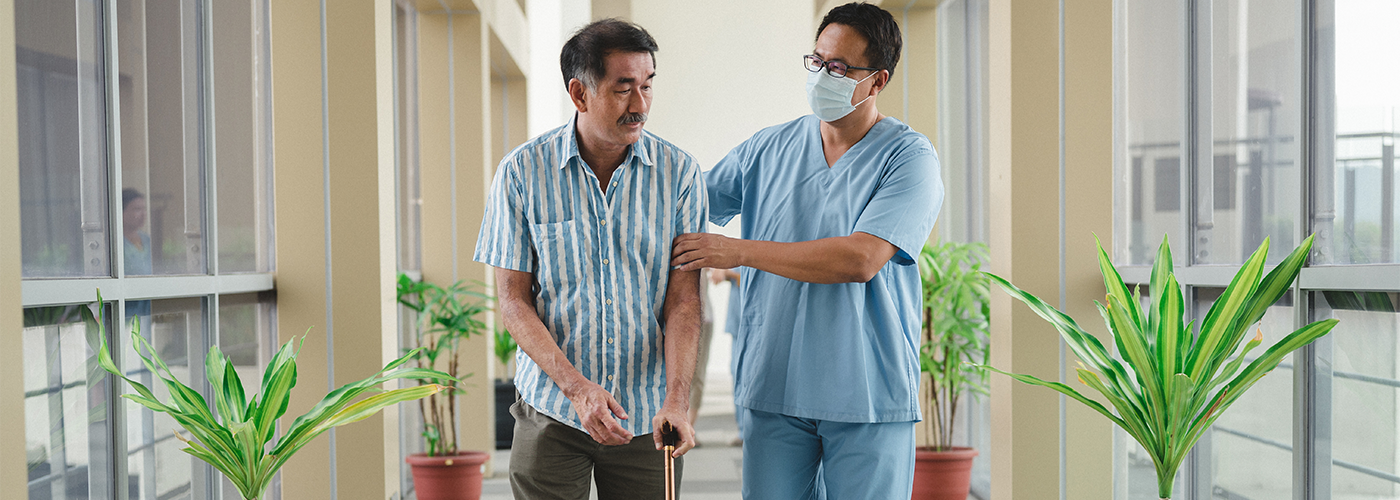
Osteoporosis is a disease characterised by a reduction in bone density and bone mass. This would not only decrease bone strength but can lead to low impact trauma fractures (broken bones). Most common osteoporotic fractures occur in the hip, vertebra (spine bone) and wrist.
Osteoporosis is a 'silent' disease as it typically does not present with symptoms. This disease is often diagnosed only after a fracture or bone density scan.
An early sign of osteoporosis includes loss of height due to spine compression, which are tiny breaks in the weakened vertebra. This causes the vertebra to be shorter, resulting in loss of height and a change in posture. Compression fracture may also cause back pain.
Bone is regularly replaced throughout life, with new bone replacing old, maintaining our skeleton robust. However, increasing amounts of bone are lost and not replaced in persons with osteoporosis. This results in the bones gradually becoming brittle and more prone to fracture.
Certain risk factors may increase your likelihood of developing osteoporosis.
Osteoporosis is usually diagnosed during routine screening for the disease. Screening for osteoporosis is recommended for:
Your doctor would first conduct physical examination and x-rays. Laboratory tests may be required depending on the risk factors.
Bone density scan
A bone density scan, also known as dual-energy x-ray absorptiometry (DEXA), is done to confirm an osteoporosis diagnosis. It is a short, safe, and painless procedure that takes approximately 10 to 20 minutes, depending on the part of body being scanned. It helps to detect low bone density of those at risk of osteoporosis and monitor treatment effectiveness if you have been previously diagnosed and are on medication.
Your bone density reflects the porosity of your bones. Learn about bone density scan and how you can increase bone density naturally.
Osteoporosis treatment aims to slow or stop bone loss and prevent fractures. It is a long term or chronic condition, but proper treatment can help improve bone mass.
In the initial treatment of osteoporosis, your doctor would recommend:
Medication
Some medications used to treat osteoporosis include:

People with osteoporosis have a high risk of fractures and falls. Therefore, fall prevention strategies can help keep you safe.
Here is what you can do:
Take action to improve your bone health now. You do not have to wait until you have a fractured bone to begin. You can begin at any age.
Early detection of osteoporosis makes it easier to treat the condition with effective and appropriate treatment. A dedicated and expert team of Orthopaedic specialists at Pantai Hospital is available for consultation to provide the best care and assistance.
Get in touch with us to book an appointment today if you have concerns or questions regarding carpal tunnel syndrome. We assure you the best possible care tailored to your specific needs.

